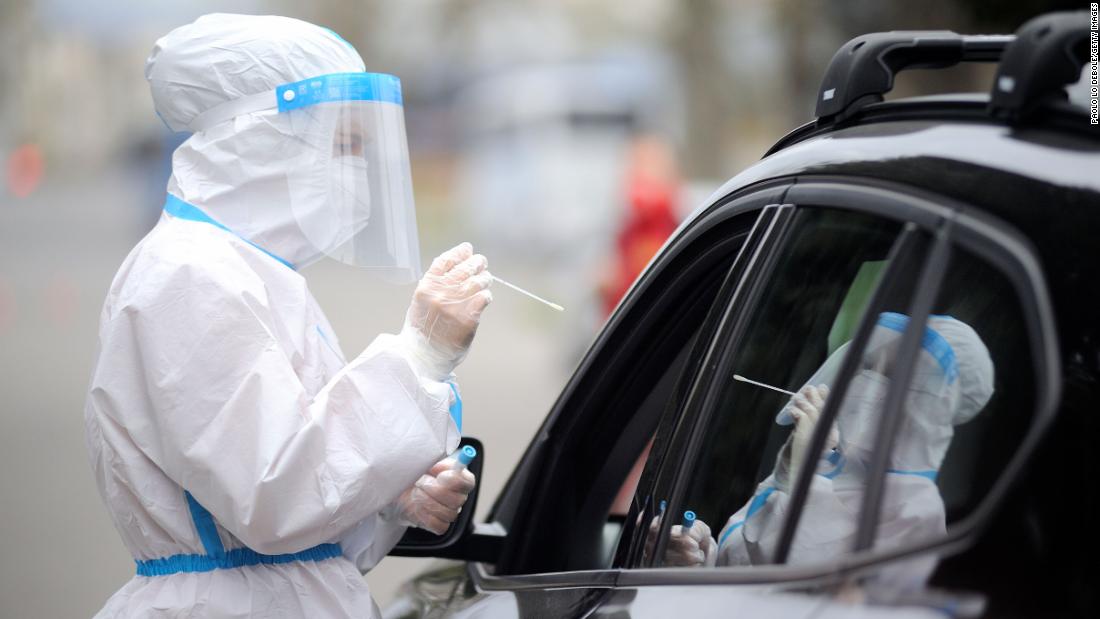Half of Italy’s 20 regions, which include the cities of Rome, Milan and Venice, will enter new restrictions on coronavirus as of Monday, March 15. The measures will take effect until April 6, according to a decree approved by Italian Prime Minister Mario Draghi’s office on Friday.
In regions marked as “red zones”, people will not be able to leave home, except for work or health reasons, with all non-essential businesses closed. In the “orange zones”, people will also be prohibited from leaving their city and region – except for reasons of work or health – and bars and restaurants will only be able to make delivery and take away.
The affected regions will be marked in red or orange, depending on the level of contagion. Regions that report weekly Covid-19 cases of more than 250 per 100,000 residents will also be automatically blocked, meaning that other regions may also be affected during this period.
The health ministry said the aim of the measures is to reduce the R-rate – the number of people for whom an infected person passes the virus – to 1.
In addition, on Easter weekend, the entire country will be considered a “red zone” and will be subject to a national blockade from 3 to 5 April.
Italian Prime Minister Mario Draghi said that new measures against the coronavirus are “necessary” because “unfortunately we are facing a new wave of infections” a year after the start of the pandemic.
The country’s R-rate is now at 1.6 with variants of the coronavirus increasing the spread of the virus, according to the Ministry of Health.
Variant B.1.1.7, which was initially identified in the United Kingdom, is also already prevalent in the country, according to the Ministry of Health, which also said it was concerned about the presence of small clusters of the Brazilian variant.
Speaking at a vaccination center at Rome’s Fiumicino airport on Friday, the PM said he understands the tax that blockages affect society, but the measures to come are a necessary step to ensure that the situation does not end. deteriorate further.
“I am aware that today’s measures will have consequences for the education of children, the economy and also for the psychological state of us all,” said Draghi.
Italy was under a national blockade from March to May 2020, however, there have been many blockades located in regions of Italy since then.
A long road ahead
Last week, 150,175 new coronavirus infections occurred, an increase of almost 15% over the previous week, according to Draghi.
On Thursday alone, Italy reported more than 25,000 new cases daily. That was his biggest record since November – and jumped to more than 26,000 cases on Friday.
The past two weeks have also seen an additional 5,000 people at the hospital with Covid-19, with the number of intensive care units increasing by more than 650, he said.
Parallel to the blockade, the PM also promised to speed up the country’s vaccination program, even with Italy banning the use of vaccines from a specific batch of doses of AstraZeneca after the death of a soldier in Sicily, who died of cardiac arrest a day later getting your first dose of the vaccine.
Draghi said the suspension of the Italian Medicines Agency (AIFA) on that specific batch by AstraZeneca was “a precautionary decision, in line with what has been done in other European countries.”
The European Union’s drug regulator, EMA, is currently investigating whether the injection could be related to a series of reports of blood clots.
Draghi added that “AIFA’s opinion, shared by scientists, is that there is no evidence that these events are related to the administration of the vaccine,” he added.
“There is currently no indication that vaccination has caused these conditions, which are not listed as side effects with the vaccine,” said the EMA in a statement on Thursday.
“Whatever the final decision of the EMA, I can guarantee that the vaccination campaign will continue with renewed intensity,” continued Draghi.
Only 3.08% (1,861,852 people) of Italy’s eligible population has been fully vaccinated so far, with 6,219,849 doses administered, according to the latest data from Johns Hopkins University (JHU).
CNN’s Nicola Ruotolo and Antonia Mortensen contributed to this report.
